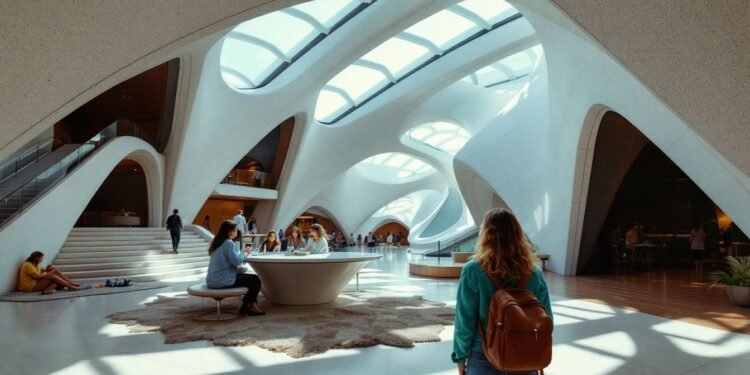Have you ever wondered what secrets lie within the iconic sails of the Sydney Opera House? This architectural marvel has captivated millions with its unique design and cultural significance.
But there’s more to this performing arts center than meets the eye.
Did you know that the Sydney Opera House was built using cutting-edge technology and innovative construction techniques that revolutionized modern architecture? 1 That’s right – the secrets hidden inside this Australian landmark have had a lasting impact on the world of design. 2 In this blog post, we’ll take you on a journey to uncover 7 secrets that changed architecture forever. 3 Get ready to be amazed!
Key Takeaways
- The Sydney Opera House’s revolutionary design features, such as its spherical geometry, sail-inspired forms, and pioneering use of computer-aided design (CAD), have profoundly influenced modern architecture worldwide.
- Despite facing significant challenges during construction, including budget overruns exceeding $100 million and the resignation of visionary architect Jørn Utzon in 1966, the Opera House’s successful completion is a testament to the perseverance and dedication of those involved.
- The Sydney Opera House has received global recognition for its architectural and cultural significance, including being awarded the UNESCO World Heritage Site status in 2007 and Jørn Utzon receiving the prestigious Pritzker Architecture Prize in 2003.
- The Opera House’s innovative design elements, such as its acoustic engineering breakthroughs, adjustable acoustic reflectors, monumental steps, and concrete shell innovations, have set new standards and possibilities for architectural design.
- As an emblem of Australia’s cultural identity, the Sydney Opera House hosts over 1,500 events annually, showcasing diverse talents across various performing arts disciplines and attracting millions of visitors each year.
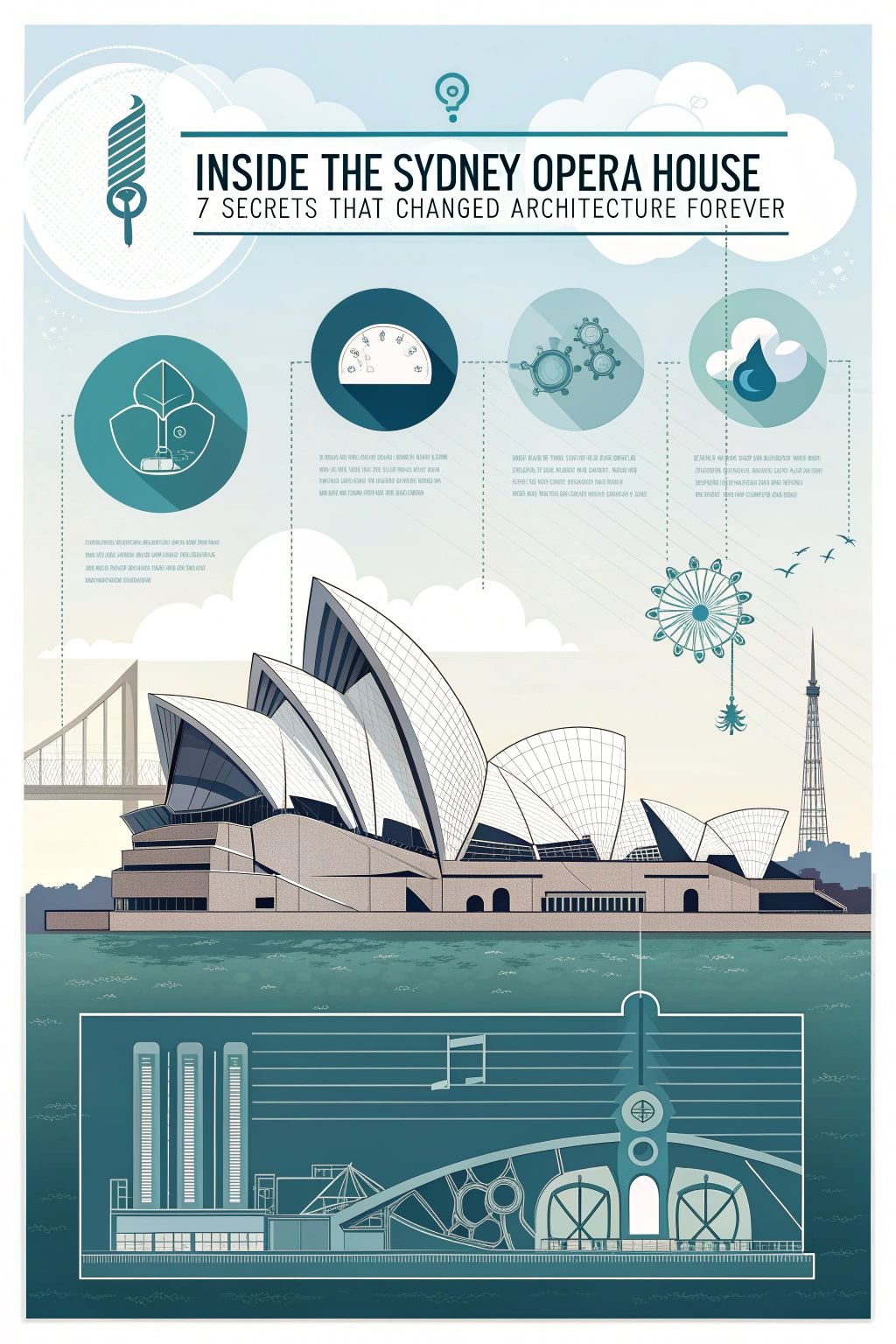
Inside The Sydney Opera House: 7 Secrets That Changed Architecture Forever

You won’t believe the architectural secrets hidden inside the Sydney Opera House. From revolutionary geometry to groundbreaking acoustics, step inside to discover the 7 innovations that forever changed building design.
Revolution in Geometry: The Spheres that Shaped Design
“The sun does not realize how wonderful it is until after a room is made.” – Louis Kahn
You might be surprised to learn that the iconic sail-like roof of the Sydney Opera House was actually inspired by the geometry of spheres. Jørn Utzon, the visionary architect behind the design, had a breakthrough when he reimagined the shells as sections of a sphere nearly 500 feet in diameter. 1 This innovative approach marked a milestone in 20th-century architecture. 2
Utzon’s use of spherical geometry allowed for the creation of the complex, curved shapes that define the Opera House’s distinctive silhouette. To achieve this groundbreaking design, over a million custom-shaped tiles were used, each carefully crafted to fit the unique contours of the shells.
The result is a stunning architectural marvel that has captivated the world since its completion in 1973.
The Sydney Opera House’s revolutionary design not only pushed the boundaries of what was possible in terms of form and structure but also pioneered the use of computational techniques in architecture.
The complex calculations required to realize Utzon’s vision were made possible by early computer-aided design (CAD) software, paving the way for future innovations in the field. 1 This groundbreaking approach to design and construction has had a lasting impact on modern architecture, inspiring countless architects and artists around the globe.
Next, let’s explore how nature itself played a role in shaping the Opera House’s iconic design.
Nature’s Influence: The Sail Design Inspiration
You can see how nature inspired the Sydney Opera House’s unique design. Just gaze at those magnificent sail-like shapes that define its exterior. The architects drew inspiration from the wind-filled sails of ships gliding across Sydney Harbour.
This organic, fluid form beautifully echoes the maritime setting surrounding Bennelong Point.
By embracing nature’s influence, the Opera House’s design achieved a harmonious relationship with its coastal environment. The building’s dynamic silhouette seems to billow and flow, as if the concrete shells were literally capturing the breeze.
This sail-inspired concept revolutionized architectural design, proving that buildings could mimic the grace and motion of natural phenomena. The Sydney Opera House stands as an iconic example of how architecture can draw creative inspiration from the shapes and movement found in our natural world.
– Breakthroughs in Acoustic Engineering
Breakthroughs in Acoustic Engineering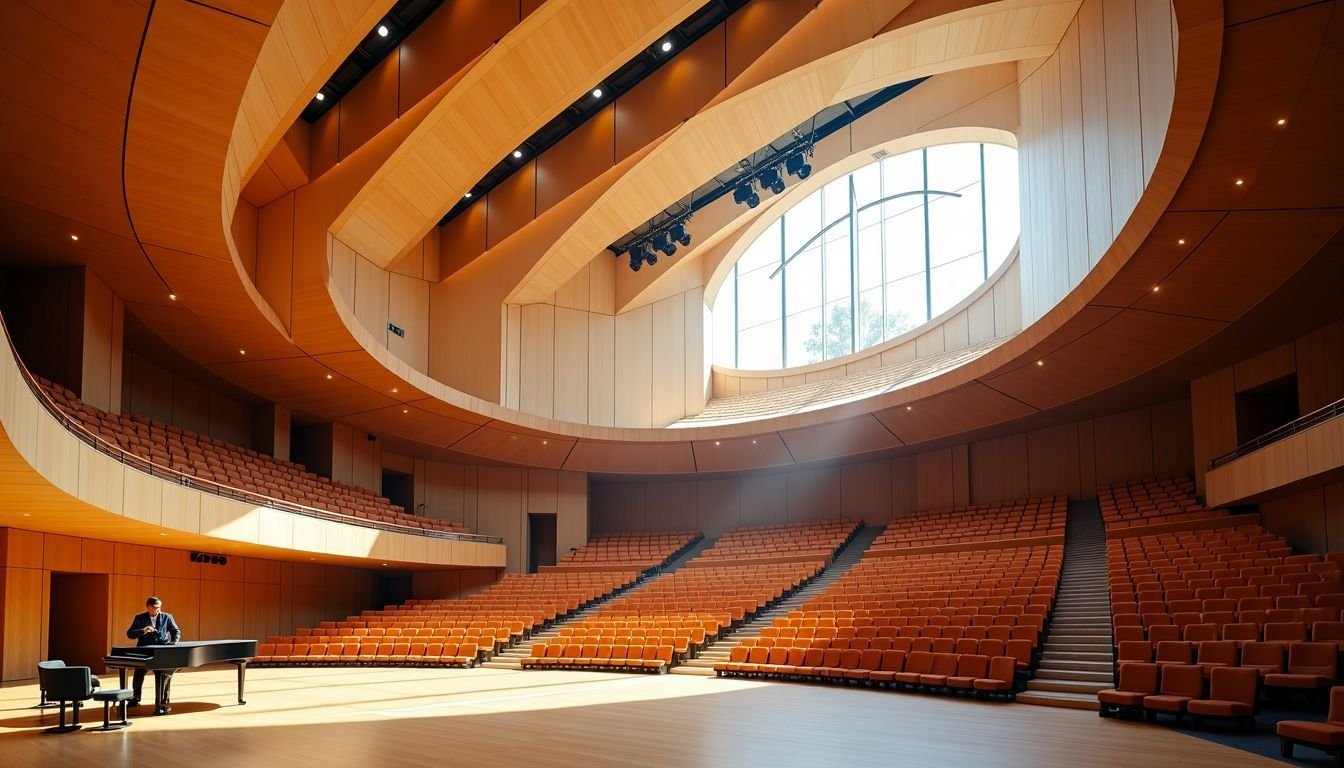
The sail-inspired design wasn’t just for show – it played a crucial role in the Opera House’s groundbreaking acoustic engineering. Imagine walking into a performance hall and being enveloped by the purest, most pristine sound you’ve ever heard.
That’s exactly what the architects and engineers achieved with their innovative approach. They used state-of-the-art computer modeling to meticulously map out the path of sound waves, ensuring that every note would reach the audience with crystal clarity.
The result? An acoustic marvel that revolutionized the way we experience live performances. 5
But the breakthroughs didn’t stop there. The team also developed a unique system of adjustable acoustic reflectors, allowing them to fine-tune the sound for each individual performance.
Whether it’s a delicate piano recital or a thunderous orchestral symphony, the Opera House can adapt to deliver the perfect aural experience. These ingenious solutions not only set new standards for acoustic design but also paved the way for countless other performance venues around the world to follow suit.
The Sydney Opera House’s acoustic triumphs are a testament to the power of innovative thinking and the boundless potential of architectural design. 1Computer-Aided Design (CAD): Pioneering Architectural Innovation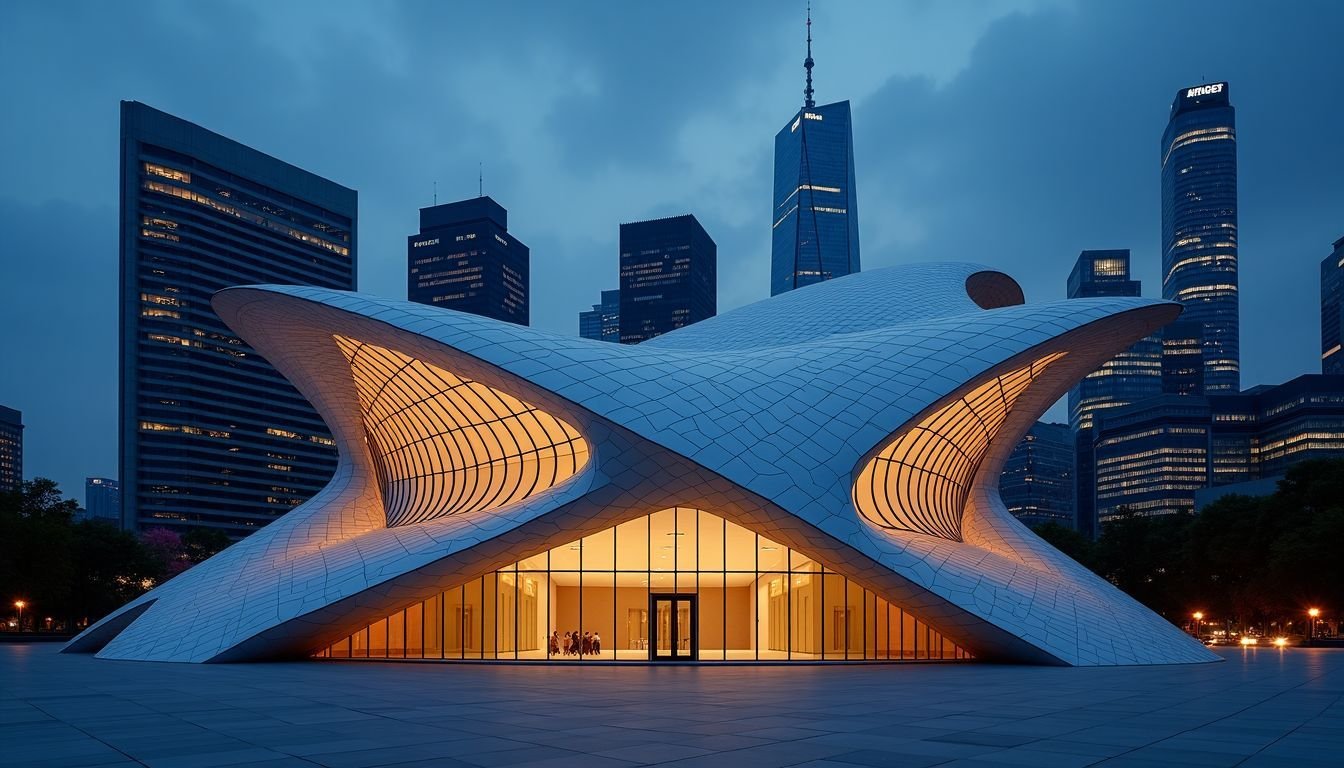
You might not realize it, but the Sydney Opera House was a trailblazer in using computer-aided design (CAD) technology. 1 It was one of the first major architectural projects to harness the power of computers for drafting and design.
This cutting-edge approach revolutionized the field, making the design process faster, more precise, and safer. 6 CAD software like AutoCAD has now largely replaced manual drafting methods.
Imagine the possibilities CAD opens up for you as an artist. You can create intricate designs with enhanced aesthetics and structural integrity. Major landmarks like the One World Trade Center were brought to life using CAD.
If you want to dive into this exciting world, consider a degree in Drafting and Design Technology from schools like ITI Technical College. 6 As Jørn Utzon, the visionary behind the Opera House, once said:.
The sun did not know how beautiful its light was until it was reflected off this building.
Peter Hall’s Contribution: Completing the Vision
Peter Hall played a crucial role in realizing the Sydney Opera House’s vision after Jørn Utzon’s departure in 1966. As the chief architect, he collaborated with Lionel Todd and David Littlemore to form a consortium that would see the project through to completion. 7 Their task was no small feat – they had to merge their own design sensibilities with Utzon’s existing aesthetics to create a cohesive masterpiece.
Hall and his team meticulously studied Utzon’s sketches and models to understand his original intent. They then set about redesigning the interiors and foyer spaces, while still maintaining the overall essence of Utzon’s vision.
One of Hall’s key decisions was to emphasize the Concert Hall’s acoustics for symphonic performances, ensuring that the space would be a world-class venue for musical arts.
Though Utzon is often credited as the mastermind behind the Opera House, it was Peter Hall’s dedication and skill that brought the iconic structure to life. His contributions were posthumously recognized by the Royal Australian Institute of Architects in 2006, cementing his legacy as an integral part of the Opera House’s history. 1 Without Hall’s expertise and commitment, the Sydney Opera House as we know it today might never have become a reality.
The Monumental Steps: Symbolism and Functionality
The monumental steps of the Sydney Opera House serve as both a symbolic and functional element. As you approach this architectural marvel, you can’t help but be drawn to the grand staircase leading up to the main entrance.
These steps represent a journey, inviting visitors to ascend towards the cultural experiences that await inside. 1
But the steps are more than just a pathway. They also provide a gathering space, a place for people to sit, relax, and take in the breathtaking views of Sydney Harbor. The steps seamlessly integrate with the building’s podium, creating a cohesive design that blends form and function.
It’s a testament to Utzon’s vision of creating a building that not only serves its purpose but also becomes a part of the public realm. 8
As you climb the steps, you’ll notice how they gradually narrow, drawing your focus towards the towering sails above. This subtle design feature creates a sense of anticipation and drama, heightening the experience of entering the opera house.
The steps become a stage in themselves, a place where the building’s architecture and the people who visit it come together in a grand performance.
Concrete Shell Innovations: Structural Breakthroughs
You know those iconic sail-like shells that make the Sydney Opera House so stunning? Well, those aren’t just for show – they’re a groundbreaking feat of structural engineering. By using concrete shells, the architects created vast open spaces inside without the need for internal columns or supports.
It’s like the building defies gravity! These overlapping shells, made from concrete, allow for huge uninterrupted areas that would’ve been impossible with traditional construction methods.
Talk about thinking outside the box…or should we say, outside the shell? 1
This innovative approach to building with concrete has had a massive impact on architecture worldwide. Suddenly, designers could dream up spaces that were more open, more fluid, more creative – all thanks to the structural possibilities unlocked by the Sydney Opera House.
It’s not just a pretty face; it’s a trailblazer that redefined what buildings could be. So next time you see those soaring white shells, remember: they’re not just an icon, they’re a revolution in architecture that continues to inspire and influence to this day.
The Cultural Significance of the Sydney Opera House
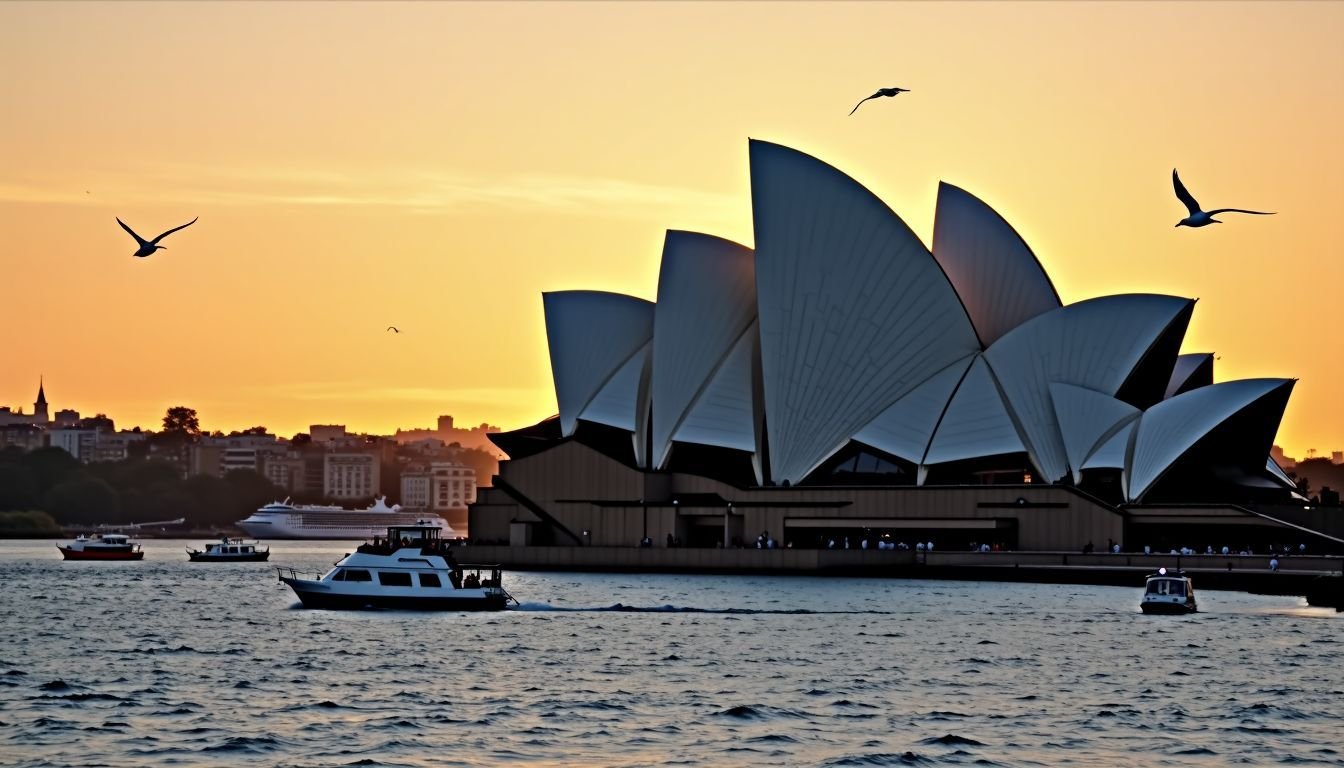
Hey there, artist! You won’t believe the cultural significance of the Sydney Opera House. It’s not just a pretty building – it’s a UNESCO World Heritage Site and a symbol of Australia’s cultural identity.
Recognized as a UNESCO World Heritage Site
The Sydney Opera House gained global recognition when UNESCO added it to their World Heritage List in 2007. 9 This prestigious honor places the iconic building alongside wonders like the Great Wall of China and the pyramids of Egypt.
UNESCO celebrated the Opera House’s bold design, which pushed architectural boundaries and influenced the direction of late 20th-century architecture. 10
You might wonder what makes a site worthy of World Heritage status. UNESCO selects landmarks that represent the best of human ingenuity and hold exceptional cultural importance. By including the Sydney Opera House, they acknowledged its groundbreaking engineering, stunning aesthetics, and role as a symbol of Australia’s cultural identity. 9 The listing also recognized the building’s ties to Denmark through its visionary architect, Jørn Utzon. 10
The 40th anniversary of the Sydney Opera House in 2013 further highlighted its enduring significance. From the unique spherical geometry of its roof to the innovative use of computer-aided design, the secrets within its walls continue to inspire artists like you.
As you explore the building’s history and impact, you’ll uncover the challenges overcome during its construction, including timeline delays and budget overruns that tested the resilience of those involved.
These struggles make the Sydney Opera House’s ultimate triumph even more remarkable.
Emblem of Australia’s Cultural Identity
The Sydney Opera House is more than just an architectural marvel – it’s a symbol of Australia’s vibrant cultural identity. Its iconic silhouette, resembling billowing sails on the harbor, has become synonymous with the spirit of the nation.
This UNESCO World Heritage Site attracts millions of visitors each year, not only for its stunning design but also for the diverse cultural experiences it offers. 11
When you think of Australia, the image of the Opera House likely comes to mind. It’s a testament to the country’s creativity, innovation, and multicultural heritage. The venue hosts over 1,500 events annually, showcasing the best of Australian and international talent across various performing arts disciplines.
From the soaring arias of Opera Australia to the melodic strains of the Sydney Symphony Orchestra, the Opera House is a hub of artistic expression that reflects the nation’s rich cultural tapestry. 12
Challenges Faced During Construction
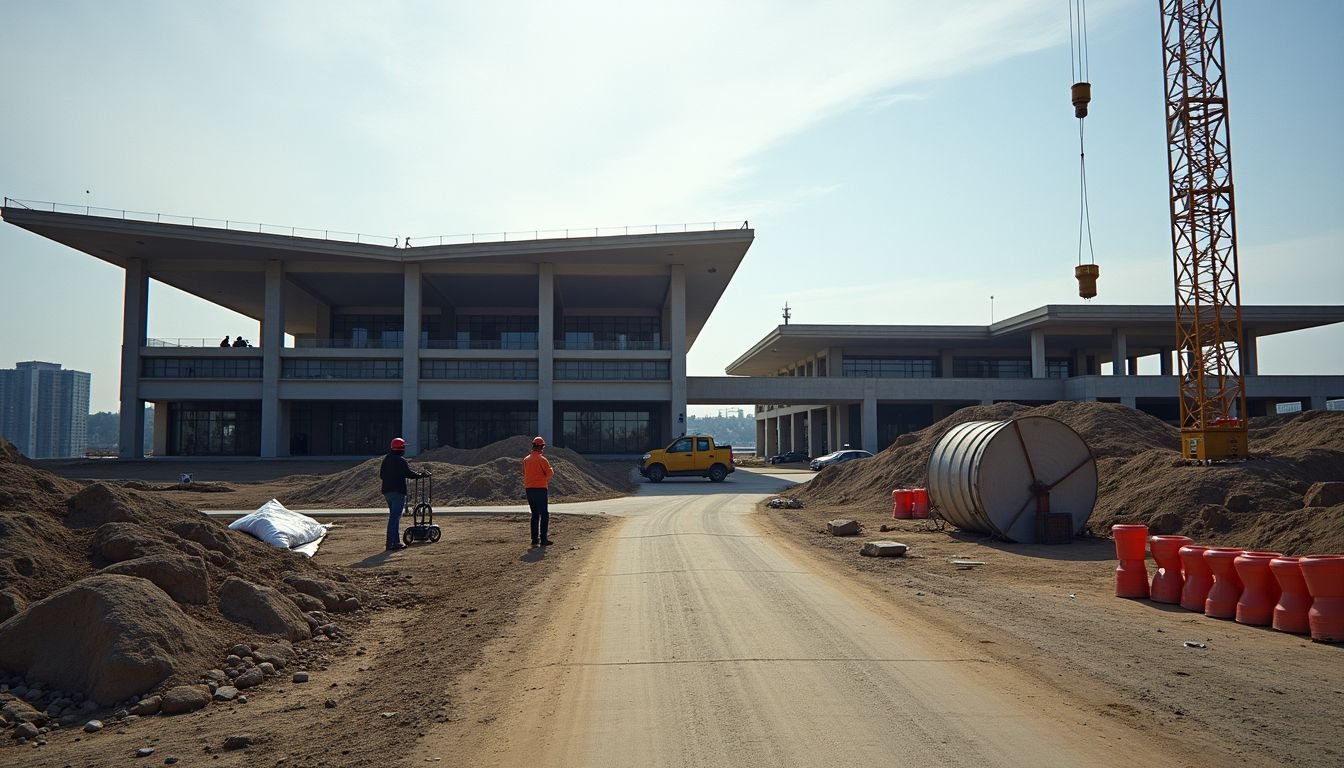
Overcoming timeline delays and budget overruns proved to be a major hurdle during the construction of this architectural marvel – the resignation of the visionary Danish architect Jørn Utzon in 1966 only added to the challenges…
want to know more about the controversies and triumphs that shaped this iconic landmark?
Overcoming Timeline Delays and Budget Overruns
The Sydney Opera House’s construction faced significant setbacks, with timeline delays and budget overruns that tested the project’s resilience. You might be surprised to learn that the initial budget of $7 million ballooned to over $100 million by the end! 13 Inadequate planning, poor communication, and a lack of clear project goals all contributed to these challenges.
Political meddling only made matters worse, exacerbating the delays and driving up costs.
Design changes also played a role, as deviations from the original specifications led to further complications. 13 To avoid similar pitfalls in your own artistic endeavors, it’s crucial to establish clear change management processes from the get-go.
By setting realistic expectations, maintaining open lines of communication, and staying true to your vision, you can navigate the complexities of bringing your masterpiece to life – without breaking the bank or pushing deadlines to the breaking point.
The Impact of Jørn Utzon’s Resignation
Imagine the shock when Jørn Utzon, the visionary architect behind the Sydney Opera House, abruptly resigned in 1966. 14 With the project two-thirds complete, his departure sent shockwaves through the architectural community.
Significant design changes followed, altering Utzon’s original vision. Construction delays mounted and costs skyrocketed, casting a shadow over the iconic building’s future.
Picture the global outcry from artists and intellectuals, their letters of protest flooding in. Utzon, deeply affected, retreated into seclusion, even refusing to attend the 1973 opening ceremony of his masterpiece.
Yet, as time passed, he reconnected with his creation, engaging with the design once more in his later years. His legacy, though tested, endures in every curve and angle of the Opera House’s shell.
The Legacy of the Sydney Opera House

You’ve gotta see how the Sydney Opera House shaped modern architecture – it’s a global icon that’s won tons of awards and honors!
Shaping Modern Architecture
The Sydney Opera House’s revolutionary design has profoundly influenced modern architecture across the globe. Its innovative use of geometric spheres, sail-inspired forms, and pioneering computer-aided design techniques paved the way for a new era of architectural possibilities. 15 The Opera House’s bold vision and groundbreaking engineering solutions have inspired countless architects to push the boundaries of what’s possible, reshaping skylines and redefining the very essence of iconic landmarks.
From its monumental steps to its concrete shell innovations, every element of the Sydney Opera House has left an indelible mark on architectural history. Its enduring legacy continues to inspire and challenge architects to think beyond the conventional, to embrace the power of imagination, and to create structures that not only serve functional purposes but also ignite the human spirit. 16 The Sydney Opera House stands as a testament to the transformative potential of architecture – a shining example of how visionary design can forever alter the course of an entire field.
Global Recognition through Awards and Honors
The Sydney Opera House has garnered global recognition through numerous prestigious awards and honors. In 2003, Jørn Utzon, the visionary architect behind this architectural marvel, was awarded the Pritzker Architecture Prize – often considered the Nobel Prize of architecture. 1 This accolade cemented the Opera House’s status as an icon of modern expressionist architecture. Additionally, in 1998, UNESCO designated the Sydney Opera House as a World Heritage Site, acknowledging its “outstanding universal value” and its representation of human creative genius. 1 These distinctions underscore the profound impact the Opera House has had on the world of architecture and its enduring cultural significance.
The Sydney Opera House’s influence extends far beyond its stunning harbor views and unique geometric design. It has become a symbol of Australia’s cultural identity, captivating the hearts and minds of people worldwide.
From its inception, the Opera House faced numerous construction challenges, including budget overruns and timeline delays. However, the perseverance and dedication of the architects, engineers, and workers involved in the project ensured its successful completion.
Today, the Sydney Opera House stands as a testament to the power of artistic vision and the potential for architecture to shape cultural landscapes. Its legacy continues to inspire and influence architects, artists, and designers around the globe. 17
Conclusion
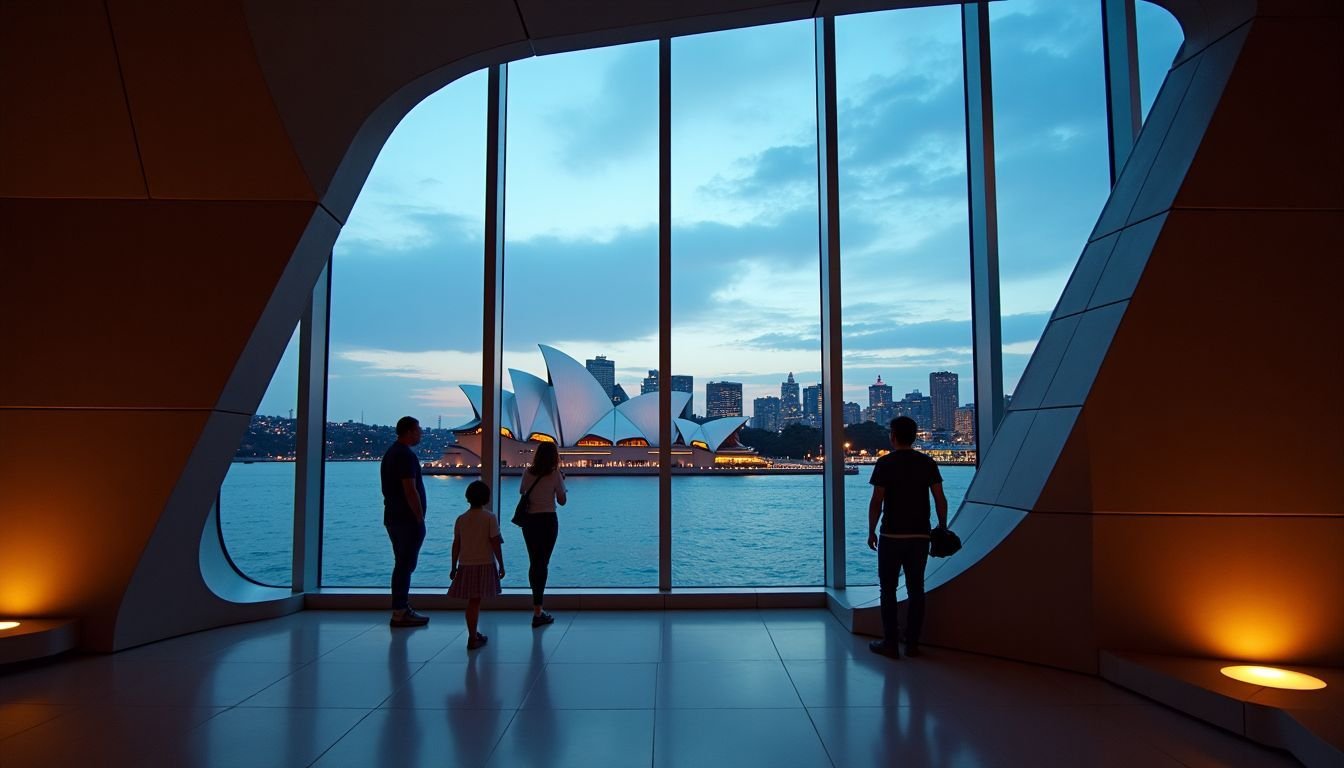
So there you have it – the Sydney Opera House is more than just a pretty face. Its revolutionary design secrets have left an indelible mark on architecture worldwide. From its bold geometric shapes to its groundbreaking use of computer-aided design, this iconic building is a testament to innovation and creativity.
The next time you admire its striking silhouette against the Sydney skyline, remember the visionary architects and engineers who made it all possible. Their legacy lives on in every curve and every tile of this architectural wonder.
FAQs
1. Hey, did you know the Sydney Opera House was designed by a Danish architect named Jørn Utzon? Pretty cool, right? He won a design competition back in 1955 – talk about making a splash!
2. So, what’s the deal with those funky geometric spheres on the roof? Turns out they’re a key part of the building’s modern expressionist style… Utzon was really thinking outside the box!
3. Get this: the construction of this architectural marvel took a whopping 14 years, from 1959 to 1973. That’s dedication! Utzon even left the project in 1966, but his vision lived on.
4. You might be wondering, “How did they make this engineering feat happen?” Well, a brilliant engineer named Ove Arup worked his magic on the structural calculations. Those iconic shells? They’re covered in glazed tiles that sparkle in the sun.
5. Step inside, and you’ll be greeted by stunning white birch interiors. The Sydney Opera House isn’t just a pretty face – it’s home to top-notch performance spaces like the Joan Sutherland Theatre. Opera Australia calls this place home!
6. Here’s a fun fact: Queen Elizabeth II herself opened the Sydney Opera House in 1973. Talk about a royal seal of approval! Since then, this cultural icon has become an Australian landmark, wowing visitors from all over the world. Trust me, it’s a must-see!
References
- ^ https://www.architecturaldigest.com/story/the-sydney-opera-house-everything-you-need-to-know-about-the-architectural-masterpiece
- ^ https://www.sydneyoperahouse.com/our-story/the-spherical-solution
- ^ https://www.researchgate.net/publication/358309860_Nature_as_a_Source_of_Inspiration_for_the_Structure_of_the_Sydney_Opera_House (2024-10-22)
- ^ https://www.sydneyoperahouse.com/sites/default/files/collaborodam_assets/soh-worksheet-4-nature-inspiring-design.pdf
- ^ https://www.acoustics.asn.au/conference_proceedings/ICA2010/cdrom-ICA2010/papers/p887.pdf
- ^ https://iticollege.edu/blog/computer-aided-drafting-changed-architecture-forever/
- ^ https://www.sydneyoperahouse.com/our-story/peter-hall-and-completion-opera-house
- ^ https://www.mindfood.com/article/celebrating-50-years-5-secrets-of-the-sydney-opera-house/ (2023-10-17)
- ^ https://www.sydneyoperahouse.com/our-story/conserving-and-celebrating-our-heritage
- ^ https://www.dcceew.gov.au/parks-heritage/heritage/places/world/sydney-opera-house (2021-10-10)
- ^ https://www.globaldesigners.in/sydney-opera-house/
- ^ https://www.bbc.com/travel/article/20231102-the-sydney-opera-house-the-monument-that-represents-australia
- ^ https://www.linkedin.com/pulse/sydney-opera-house-project-masterpiece-strong-case-
- ^ https://www.newyorker.com/magazine/2005/10/17/unfinished-business-7
- ^ https://parametric-architecture.com/sydney-opera-house-modern-architecture/?srsltid=AfmBOoog1BAlgrmze5YdL8N47u3Mmt5yRfi3QeI3nIvh7HgVJyP0kMlA (2024-10-27)
- ^ https://parametric-architecture.com/sydney-opera-house-modern-architecture/?srsltid=AfmBOoq0E9dZ4DUt75rCnDZIqPbtbgJi4dCuZPtCrK2IFxkrhjTiWlA2 (2024-10-27)
- ^ https://www.youtube.com/watch?v=Gharapnbo8U


